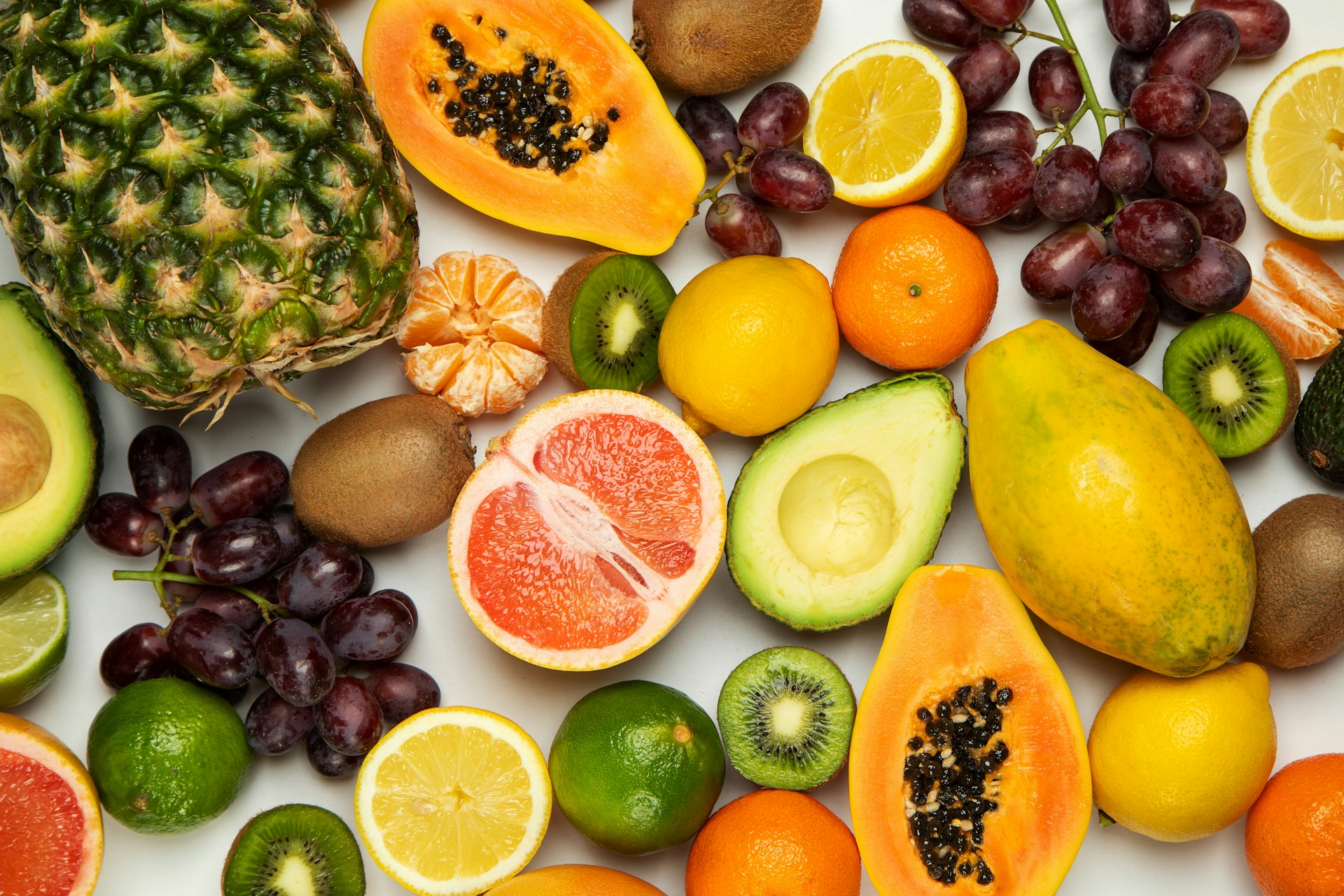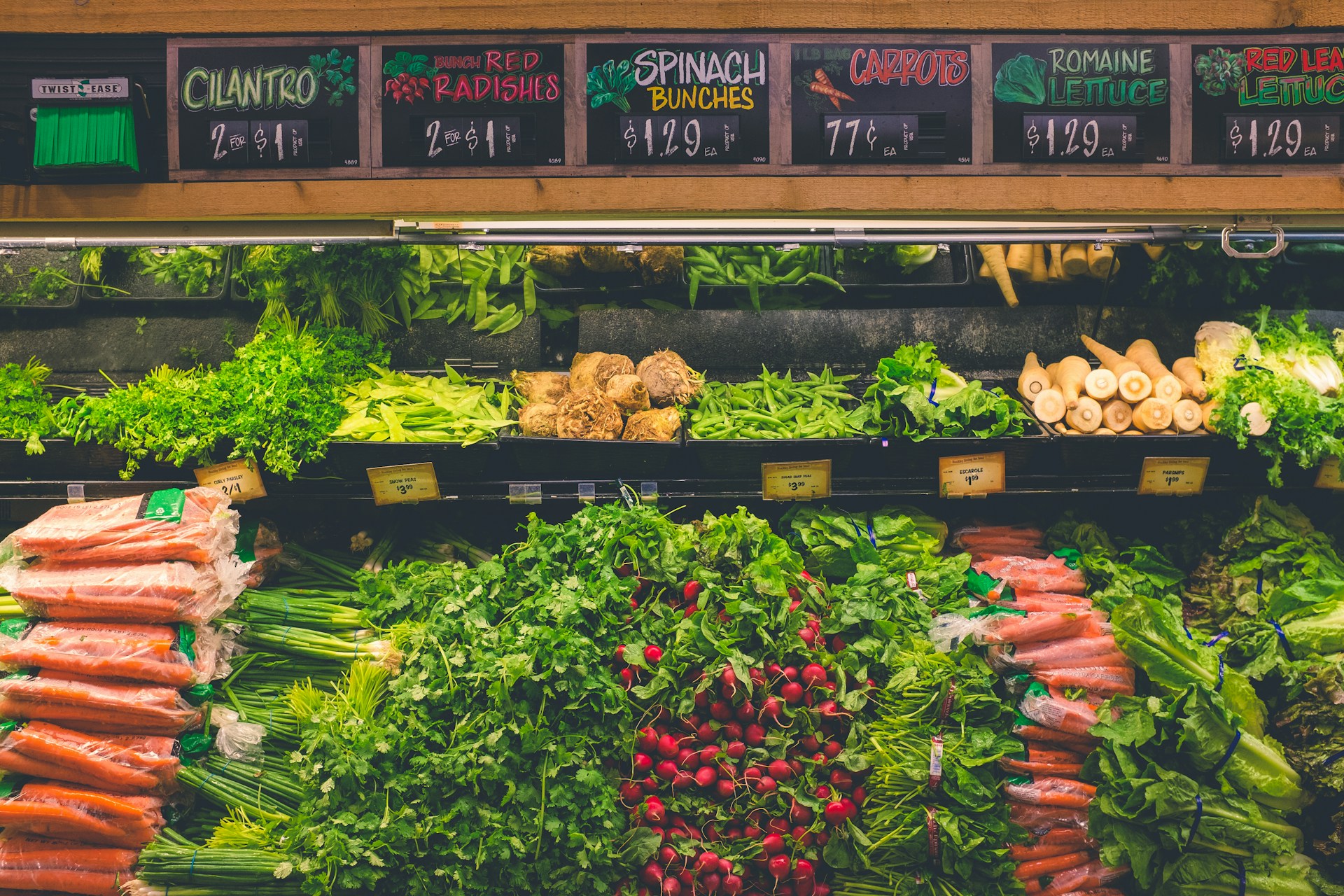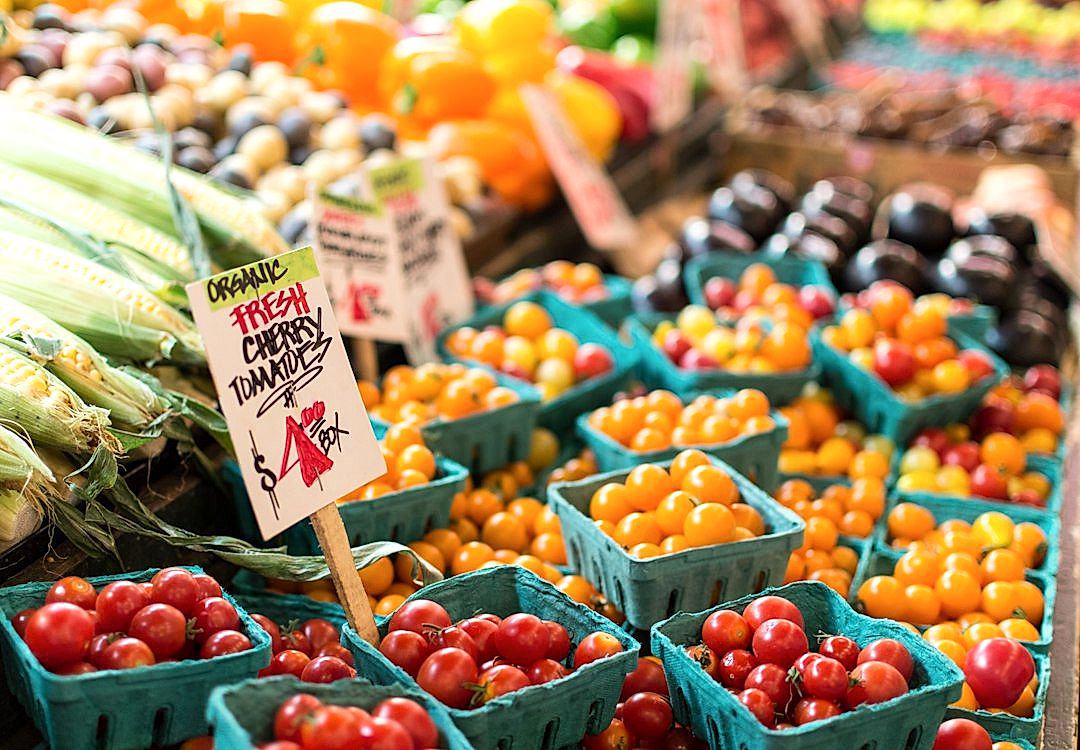As technological advancements continue to transform various industries, the produce distribution sector is not lagging behind.
Cold chain technology, an integral part of this sector, has seen a mass of innovation over recent years.
These fundamental changes have heralded considerable improvements in the transportation, storage, and delivery of perishable goods.
Still, questions persist: What are these technologies, and how are they improving distribute efficiency and food safety?
In subsequent paragraphs, we will delve into these emerging technologies and their critical role in today’s produce supply chain.
Furthermore, we will explore the phenomenal benefits they present to producers, suppliers, and consumers alike.
Contents
- Cold Chain Technologies Revolutionizing Produce Distribution
- 1. Advanced Refrigerated Transport Containers
- 2. Real-Time Temperature Monitoring Systems
- 3. Blockchain Enhanced Supply Chain Transparency
- 4. IoT-Enabled Cold Storage Warehouses
- 5. AI-Powered Forecasting and Management
- 6. Sophisticated Humidity Control Technologies
- 7. Sustainable Solar-Powered Refrigeration Units
- The Bottom Line
Cold Chain Technologies Revolutionizing Produce Distribution
1. Advanced Refrigerated Transport Containers
Playing a pivotal role in the cold chain infrastructure, advanced refrigerated transport containers have revolutionized produce distribution.
These specialized containers are built to maintain cold temperatures required for preserving the freshness and quality of different products.
The advancement in the technology of these transport containers has bolstered the efficiency and effectiveness of cold logistics.
Advanced refrigeration in these containers maintains a stable temperature, thus avoiding the risk of freezing or overheating, assuring product safety.
Featuring high-performance insulation, advanced containers lock in the cold air, minimize temperature flux and maintain the cold chain integrity even in harsh weather conditions.
Through the use of advanced refrigerated transport containers, businesses are reaping the benefits of reduced wastage and improved shelf-life of perishable goods, adding value to their operations.
They come with variable temperature settings that allow customization depending on the product type and its specific cold storage needs.
This flexibility supports the distribution of a diverse range of perishable produce across long distances.
Sophisticated cooling systems equipped in these containers ensure the consistent circulation of cold air, preventing the creation of warm spots.
Many of these containers are now designed to be environmentally friendly with a focus on energy efficiency, supporting sustainable and green initiatives.
This is achieved by the deployment of hydro-fluorocarbon-free insulation materials and refrigerants that cause less harm to the ozone layer.
Advanced refrigerated transport containers are robust and durable to withstand the rigors of long transport times and repeated use.
The installation of real-time monitoring systems in these containers makes it feasible for temperature tracking throughout the shipping process, mitigating risks.
Furthermore, some containers are installed with GPS tracking ensuring that shipments can be traced if any logistical issues arise.
Overall, these technological improvements in refrigerated transport containers emphasize safety, sustainability, and efficiency in the cold supply chain.
They serve as a concrete example of how the use of innovative cold chain technologies can facilitate better and more efficient produce distribution globally.
2. Real-Time Temperature Monitoring Systems
In the world of cold chain technologies, real-time temperature monitoring systems are integral to maintaining the overall quality and safety of produce during transit.
These systems function by continuously monitoring the temperature inside the cargo hold and providing real-time updates to the shipper through advanced telematics solutions.
Monitoring is possible both in transit and in storage, offering a comprehensive solution that ensures the freshness of the produce from the farm to the consumer’s table.
This technology has a dual purpose – not only does it ensure the quality of the products, but it also helps to reduce food wastage.
Through these systems, it becomes possible to control atmospheric conditions inside the containers to optimize the long-term storage of different types of produce.
Integral to the innovations in cold chain technologies, real-time temperature monitoring systems not only ensure the quality of the produce, but also significantly reduce food wastage.
Highly sensitive sensors are used to detect any fluctuations in temperature, which is critical given that even the slightest variation can affect the quality of the produce.
This level of precision and control over the storage and distribution conditions has profound implications for the agri-business sector.
By helping to ensure peak freshness, these monitoring systems are helping to drive a new era of quality control in the produce distribution industry.
Moreover, this advancement supports a more sustainable food distribution system by minimizing the wastage associated with spoilage during transit.
These systems also enhance traceability as they can store temperature data for retrospective analysis, which could be important in the event of a quality dispute.
Increasingly, these monitoring technologies are being combined with internet of things (IoT) devices to provide more proactive control over cold chain operations.
With the addition of machine learning algorithms, it becomes possible to predict and respond to potential problems before they occur, leading to a drastic reduction in product losses.
This in-depth temperature control is bringing about revolutionary changes in the produce distribution sector with its potential to improve product quality, reduce loss, and increase profitability.
Taken together, advances in real-time temperature monitoring technologies are redefining the benchmarks for quality control and traceability within the produce shipping industry.
As a result, real-time temperature monitoring systems are proving to be a pivotal element of the technological revolution sweeping through the cold chain logistics landscape and shaping the future of produce distribution.
3. Blockchain Enhanced Supply Chain Transparency
Among the most transformative technologies in modern cold chain logistics, blockchain is rapidly emerging as a primary gamechanger.
Its application in this area enhances supply chain transparency at an unprecedented level, providing a new layer of trust in the distribution process.
Blockchain empowers all players involved in the supply chain, from the original producers to the final consumers, with access to indelible and tamper-evident records of the produce journey.
With blockchain, each step in the cold chain can be meticulously tracked and verified, from the time of harvest, through storage, transport, and delivery to retailers.
This offers crucial benefits in terms of ensuring product safety and quality, as well as in meeting regulatory compliance.
The use of blockchain also works to prevent food fraud and counterfeiting – issues which have long plagued the food distribution industry.
By making food supply chains more transparent, blockchain provides a solid foundation for data-based decision making by stakeholders.
Individuals and businesses can accurately ascertain the origin and quality of the produce, encouraging more informed purchasing decisions.
This helps not only to maintain the quality and safety of the produce, but also to optimize the logistics of its transport and storage.
Moreover, blockchain’s decentralized nature means that this data cannot be manipulated or hidden at will, bringing an unparalleled level of visibility and trustworthiness to the transactions.
Blockchain is not just a tool for transparency, though; it has also become an important tool in dealing with the critical challenge of food waste.
By verifying the steps in the cold chain, preventable loss can be substantially reduced, which translates to both financial savings and a positive environmental impact.
Because of this, the adoption of blockchain not only represents a technological revolution in produce distribution, but it also pushes the industry towards a more sustainable future.
As you can see, the use of blockchain technology is revolutionizing the cold chain process in a profound way, bringing in unprecedented efficiency, transparency, and trustworthiness.
By disrupting long-established operations, blockchain is proving to be a crucial building block in the new era of produce distribution.
4. IoT-Enabled Cold Storage Warehouses
The Internet of Things (IoT) is a transformative technology that is revolutionizing many industries, and cold chain produce distribution is no exception.
IoT technology involves connecting devices to the internet that would not otherwise have this capability.
These devices then collect and transfer data, allowing for real-time monitoring and improved decision making.
In cold chain distribution, IoT technology is being used to create ‘smart’ cold storage warehouses.
These warehouses are capable of monitoring and controlling their own environment, ensuring that produce is kept at the optimal temperature and humidity levels.
This real-time monitoring allows for immediate action to be taken if conditions fluctuate beyond the desired range, significantly decreasing the risk of spoilage.
Besides temperature and humidity control, these IoT-enabled cold storage facilities can also track the location and status of goods, aiding in traceability and stock control.
This form of automated inventory management not only helps to prevent loss from spoilage but also boosts efficiency by reducing the time needed for manual stock checks.
In addition, these facilities can utilize predictive analytics to forecast future storage needs based on trends in data.
This makes it possible to manage the supply chain more efficiently, minimizing waste and maximizing profits.
The data generated in these IoT-enabled warehouses can further be integrated with other technologies, such as blockchain, to enhance transparency and trust in the supply chain.
These facilities also typically incorporate automation technologies, such as robotic systems, to reduce manual labor and increase efficiency.
Despite the upfront investment required to establish an IoT-enabled cold storage warehouse, the benefits in terms of efficiency, waste reduction, and product quality make it a valuable addition to the cold chain distribution process.
Future advancements in IoT technology can be expected to bring even more benefits to the sector, potentially including improved energy efficiency and the ability to respond proactively to problems.
To sum up, the application of IoT in creating ‘smart’ cold storage warehouses is a powerful tool in revolutionizing the cold chain logistics of fresh produce distribution.
It does not only ensure higher quality produce by maintaining optimal storage conditions but also enhances efficiency through automated inventory management and improved supply chain transparency.
5. AI-Powered Forecasting and Management
The introduction of artificial intelligence (AI) into cold chain logistics has revolutionized produce distribution significantly.
AI-powered forecasting and management solutions are truly transformative in cold chain operations.
These intelligent systems use complex algorithms to predict demand, plan inventory, manage supply, and ensure consistent temperature control throughout the transportation process.
By utilizing machine learning capabilities, these AI algorithms can analyze vast amounts of historical and real-time data to detect patterns and trends that help in reducing waste and improving efficiency.
More than just data analyses, these AI Technologies can make decisions and predictions with remarkable accuracy, leading to a significant decrease in spoilage and resulting in optimal distribution of fresh produce.
Data-driven insights provided by these AI technologies help managers and supervisors make well-informed decisions, which lead to improved operational efficiency and customer satisfaction
Moreover, these systems also facilitate seamless cross-functional collaborations in complex supply chains by automating data sharing across various stakeholders, enhancing transparency and traceability.
This ability of AI solutions to simplify and streamline the management processes in a cold chain is a significant step forward in the produce distribution industry.
Additionally, the use of AI in cold chain management also provides real-time tracking and alerting capabilities.
This feature enables stakeholders to receive notifications about potential issues in the supply chain and take immediate corrective action, thus preventing costly disruptions or delays.
Such advanced features integrated into one system are proving to be a game-changer for the produce distribution industry.
Many logistics companies are harnessing the power of AI to transform their cold chain operations and improve the quality of produce upon arrival at the destination.
The integration of AI in cold chain technology has the potential to deliver extraordinary benefits such as improved efficiency, accuracy in demand forecasting, better inventory management, and enhanced customer satisfaction.
As AI-powered systems continue to evolve, there is a high likelihood that they will become a common feature in the cold chain logistics of the future.
There is no doubt that the introduction of AI into the cold chain logistics is a significant milestone, embodying the future of produce distribution.
6. Sophisticated Humidity Control Technologies
The innovation and sophistication seen today in terms of humidity control technologies is nothing short of breathtaking.
For the uninitiated, these technological advancements play an essential role in maintaining the optimal moisture levels in cold storage units for fresh produce.
Humidity control is not a technology that can simply be applied and forgotten.
It is a precise and delicate balancing act that, when executed correctly, can dramatically extend the shelf life of fruits, vegetables, and other perishable goods.
Without these technologies, a cold storage warehouse would be no different than an enormous refrigerator, merely slowing the ripening process instead of actually extending the shelf-life of the produce.
Humidity control technologies work by maintaining the level of atmospheric moisture in the cold storage units within very specific parameters.
This ensures two things: one, the produce doesn’t dry out and, two, it doesn’t soak up excess moisture and become soggy or develop mold.
These technologies are so sensitive that they can steadily regulate the moisture levels even under extreme environments, like amid a heatwave or a sudden drop in outside temperatures.
One of the most significant advancements in this space is the development of humidity control systems which can adjust based on the specific need of the produce being stored.
For example, the moisture needs for a crate of oranges are dramatically different from that for freshly picked tomatoes or leafy greens, and these advanced systems can adapt to meet these varying requirements.
Further adding to their efficacy is the ability of these systems to work in conjunction with advanced refrigeration and temperature control systems, maintaining not only the optimal moisture levels but also the perfect temperature for the stored goods.
These systems can be programmed to adjust based on real-time data, ensuring optimal conditions are maintained at all times, irrespective of changes in external environmental conditions.
In the grand scheme of cold chain technologies, sophisticated humidity control is a big leap forward in preserving the freshness and nutritional value of produce from farm to fork.
It’s not exaggerating to say that these advancements have the potential to revolutionize produce distribution as we know it, drastically reducing food wastage and increasing the availability and accessibility of fresh produce around the world.
7. Sustainable Solar-Powered Refrigeration Units
With the increasing demand for more sustainable and environment-friendly solutions in every industry, the cold chain technology is no exception and is witnessing a steady rise in sustainable solar-powered refrigeration units.
These systems use the power harnessed from the sun to cool down the storage area, making them ideal for locations with regular and ample sunlight.
They do not emit harmful gases and thus, drastically reduce the carbon footprint and the impact on global warming.
Not just that, solar refrigeration units do not rely on the electrical grid, making them a cost-effective solution in the long run.
The use of these units in the produce distribution industry is a huge step towards minimizing harmful emissions that most traditional cold storage units produce.
Furthermore, solar-powered refrigeration units are easily scalable, which means they can be adapted for both small-scale and large-scale cold storage needs.
Another advantage of these systems is that their performance is not hindered even during power outages as they store the excess energy captured from the sun for future use.
This means that produce being stored and transported remains fresh and cold, even during extended periods of no sunlight or electricity.
Many companies around the world are already implementing solar-powered refrigeration units and are noticing significant drops in their operating costs and their impact on the environment.
Moreover, these solar-powered units come equipped with real-time temperature monitoring systems, so companies can continually track the temperature and ensure that their produce is being stored at optimal conditions at all times.
There are also companies working on incorporating these solar-powered units with IoT devices and AI-powered management software, for smarter and more efficient cold storage solutions.
The sustainability and cost-effectiveness of solar-powered refrigeration units is prompting governments and organizations globally to incentivise their use.
Although the initial installation cost for these units might be relatively high, the long-term benefits both for the businesses and the environment outweigh this initial expense.
With the global shift towards renewable energy sources, these solar-powered refrigeration units are expected to become a norm rather than an exception, in the coming years.
While sustainable solar-powered refrigeration units are still a relatively new concept in the produce distribution industry, the benefits they offer are massive, and it won’t be long before we see them being widely adopted across the globe.
The Bottom Line
Technological advancements are transforming cold chain logistics, driving efficiency, transparency, and sustainability.
From advanced refrigerated transport containers and real-time temperature monitoring systems, businesses can ensure the safe and quality delivery of temperature-sensitive goods.
Blockchain, IoT, and AI are reshaping supply chain practices, paving the way for end-to-end visibility, improved forecasting, and management.
Innovative technologies such as sophisticated humidity control and sustainable solar-powered refrigeration units further enhance the effectiveness and environmental impact of cold chains.
Indeed, these technological solutions represent an exciting development in achieving more resilient and efficient cold supply chains in a rapidly evolving digital world.




